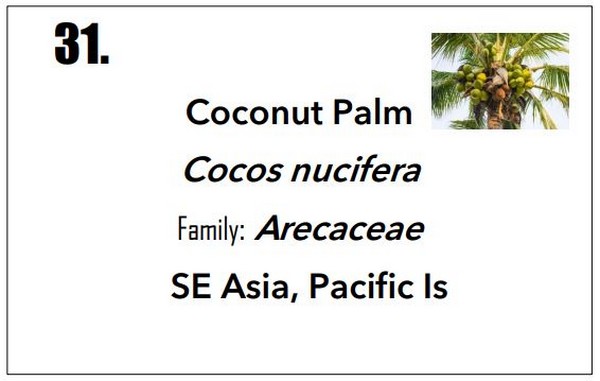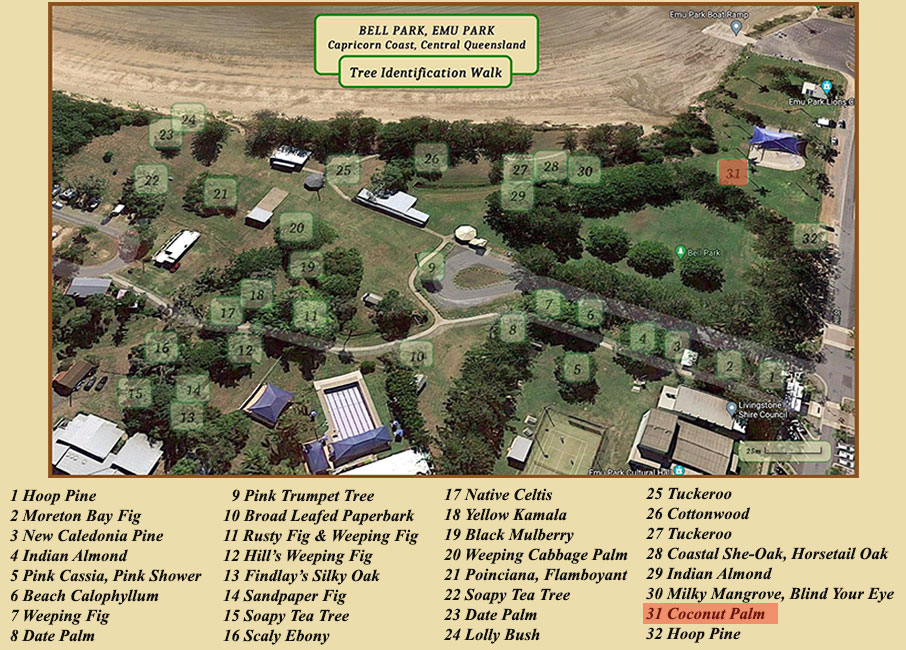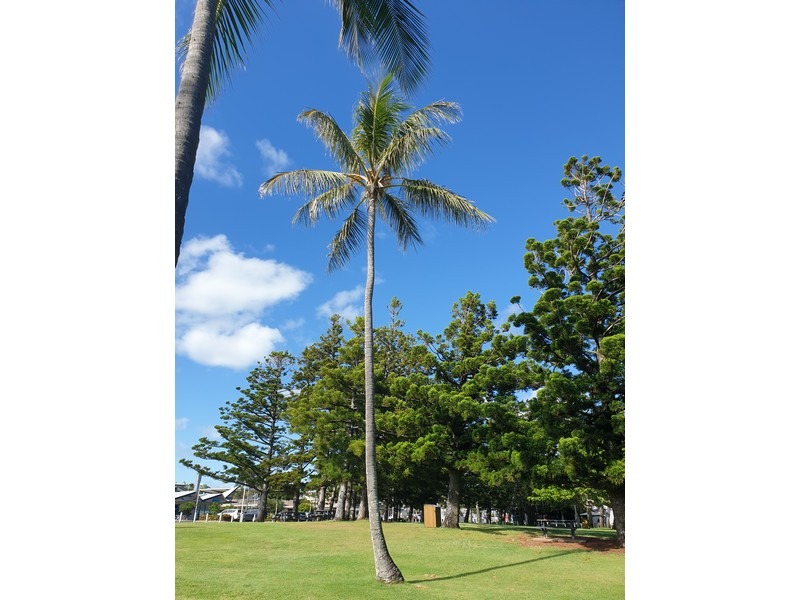

Scroll down to view the photo gallery for this tree
TREE NUMBER 31.
COCONUT PALM
(Cocos nucifera)
While this well-known tropical palm tree scarcely needs description, it is not endemic to the region and has sometimes been classified as a weed. However, in SE Asia and the Pacific Islands where the plant is native, it has vitally important commercial and local uses.
A tall palm with a slender, usually curving trunk up to 30metres, this productive tree can live for more than a hundred years. Its panicles of yellow flowers develop into the familiar green fruit that dries and browns as it ripens.
In traditional cultures, the leaves are woven into mats, baskets, ropes as well as used for roofing materials. The water, milk and flesh of a ripe nut are widely consumed, mostly after processing. Oil is pressed from the dried flesh or copra.
Because of the dangers associated with falling nuts, some local authorities have removed Coconut Palms from public places altogether, while others undertake a regular and expensive de-nutting program.
View Slideshow Gallery (more photos will be added)

